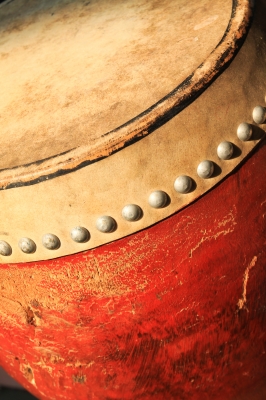Native Chinese Instruments: The Old and the New

When people think of China, notions of a deep and ancient culture spring to mind.
Perhaps this is due to the fact many people know modern China as a relatively closed-off country dedicated to preserving its heritage. But China has always been a nation influenced by global â?? even American â?? ideas, which was evident in the 1950s when Western notions regarding orchestration reached the country and added new dimension to the cultureâ??s more traditional music.
Indeed, for much of Chinaâ??s long history, it was higher pitches and slightly nasal tones that were the primary identifiers of its music. This is a deep reflection of Chinaâ??s rich culture and heritage, but the new trends added scope and a fuller sound to Chinaâ??s music.
Many of Chinaâ??s traditional instruments were shaped by these aforementioned ideas, and they wound up becoming hybrids of the countryâ??s more ancient instruments. With that in mind, here are some of the most popular traditional Chinese instruments â?? both old and new — that can still be heard in the music of Chinaâ??s culture today.
Bowed Instruments
- Gerhu — When compared to a Western instrument, the Gehu is much like a cello â?? the primary difference being that the gehu is a bass instrument. The gehu is one of many traditional Chinese instruments influenced by the 50s notions of orchestration, and is not dissimilar in technique and function to the double bass. Its name is broken into two parts: Ge â?? meaning â??revolutionaryâ? â?? and hu â?? a general Chinese word that means â??stringed instrument.â?
- Erhu â?? This is one of the most popular of Chinaâ??s native bowed instruments and could most favorably be compared to a violin or fiddle. Dating back to the Tang Dynasty of the 600s, this instrument features a hexagonal, drum-like body and a mere two strings.
- Zhong Hu â?? This is a modification of the Erhu designed in the 1940s in order to provide a more mid-range sound to Chinese music. Another two-stringed instrument, the Zhong Hu is similar to a viola, and its deep notes can be heard in many folk melodies throughout China and the surrounding region â?? especially Mongolia.
Lute Instruments
- Pipa â?? This four-stringed instrument has a pear-shaped body and is played upright with five guitar pick-like finger attachments called â??plectra.â? One of Chinaâ??s more ancient instruments, the pipa dates back some 2000 years and is featured heavily in chamber music as well as solo pieces.
- Sanxian â?? This instrument features three strings and a round body covered in snakeskin. Mostly popular in northern China, the Sanxian is heard mostly in folk and opera music.
- Yueqin â?? This moon-shaped instrument (Yue means â??moonâ? in Chinese) has four strings and is a primary instrument in many local operas.
Harps
- Konghou — This is one of Chinaâ??s most ancient instruments and was first written about around 600 BC. The original incarnation of this member of the harp family has, unfortunately, been lost to time. That said, reproductions of the konghou began to appear in the 1950s and feature a classic harp shape designed to be played with both the left and right hands. The sound that the instrument produces is rich, layered, mellow and full of grace, which is evocative of the Chinese culture itself.
These are just a few of the instruments that play a part in Chinaâ??s deep musical culture. These items can be heard across the whole spectrum, from the folksy offerings of Chinaâ??s rural citizens to the operas enjoyed by the aristocracy. But no matter the form of music, these instruments represent the ancient history of China as well as how it adapts through time.
Justin Miller is a professional blogger that writes for Jamplay.com. JamPlay is a leading online music educator offering 2,000+ guitar lessons for beginners online in HD.
Image courtesy of nuchylee / freedigitalphotos.net
[shareaholic app="share_buttons" id="4703992"][shareaholic app="recommendations" id="4704000"]
